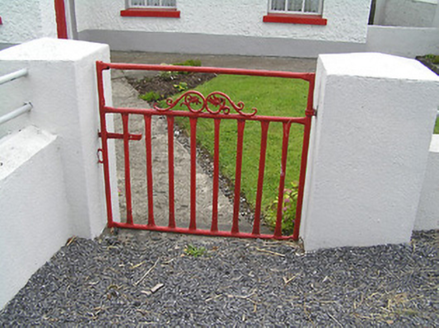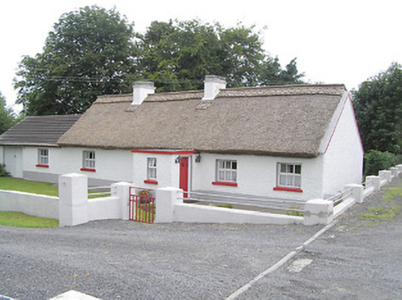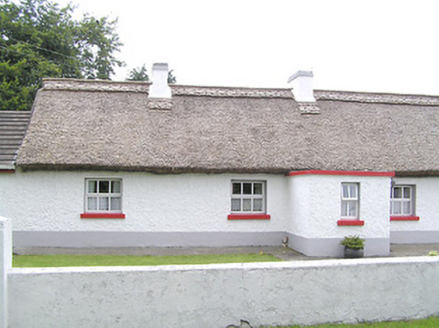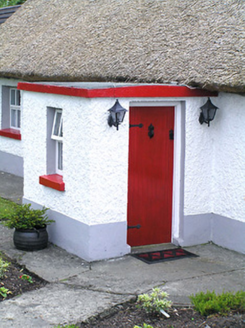Survey Data
Reg No
13402008
Rating
Regional
Categories of Special Interest
Architectural, Technical
Original Use
House
In Use As
House
Date
1780 - 1820
Coordinates
229950, 269155
Date Recorded
11/08/2005
Date Updated
--/--/--
Description
Detached five-bay single-storey thatched house, built c. 1800, with flat-roofed entrance porch offset close to centre of the front elevation (east), and with single-storey extensions to south gable and to rear (west), both with pitched artificial slate roofs. Pitched thatched roof with ropework to ridge and with two painted rendered chimneystacks. Painted wetdashed rendered walls with smooth rendered plinth. Square-headed window openings with replacement windows and painted sills. Square-headed doorway to the north face of porch having timber battened door. Set back from road, aligned at a right-angle to the road alignment. Painted rendered boundary walls to road-frontage with metal railings and wrought-iron pedestrian gate
Appraisal
Although extended and altered, this well-maintained thatched house retains its early form and character. Modest in scale and form, this house exhibits the simple and functional form of vernacular building in Ireland. Of particular significance is the survival of the thatched roof, which is now rare in County Longford making this an important surviving example. The ropework to the ridge, which is not a traditional feature of thatched vernacular buildings in Ireland, suggests that the thatched roof was replaced in recent years. This building is set at a right-angle to the road alignment, which is a characteristic feature of the Irish vernacular tradition. The long low profile of this structure is typical of many modest thatched buildings in Ireland. It has been extended along its length, which is another characteristic feature of buildings of this type. The form of this building also suggests that is was extended by a bay to the north at some stage, perhaps at an early date. Set on a low sheltered site, the orientation takes advantage of the natural heat of the sun's path. A windowless gable faces north, to retain heat. The position of one of the chimneystacks, which is roughly in line with the entrance, hints that this building may have the lobby-entry plan that is characteristic of vernacular buildings in the midlands of Ireland. Buildings of this type were once a ubiquitous feature of the rural Irish landscape but are now becoming increasingly rare. This modest building is an integral element of the built and vernacular heritage of Longford, and it adds appeal to its location adjacent to the main Mullingar to Longford Town road.







